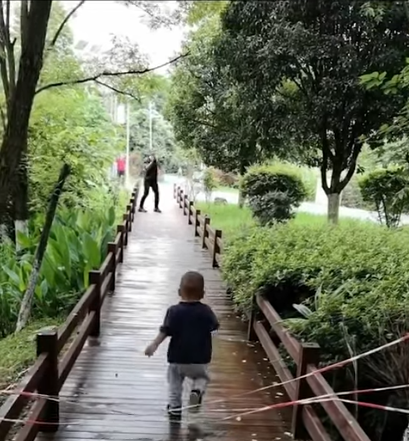Do not do for someone, that they can do for themselves.
This is a life, teaching, leading, parental sentiment or wisdom that I have long held important. It sits along side the notion of “no rescuing.” This is the focus on this post and thinking. This philosophy then spot lights the importance ‘clarity of instruction’ (see Engelmann’s faultless communication) and modelling what I do, when I do not know what to do. It marries with a coaching-on-the-go leadership style approach, a process over outcome outlook.
This sentiment or wisdom underpins my teaching, leading and parenting practice – encouraging independence, self-direction, self-reliance, building capacity, resilience, securing meta-cognitive practices – long before it is required.
Give a young person a fish versus teaching them how to fish.
About a year ago a viral video popped up on Linkedin of a father and son crossing a barred bridge – here the father first models how to cross the barrier, then monitors and supports his son’s efforts to cross the bridge, restarting his son’s efforts to make it past the bar rather than “rescuing” him. #norescuing
A year ago I was telling myself to bookmark the post, that I would need it for future reference – I forgot. Hence I spent too long searching for the original video and I can now only find a few annoying “TikTok voice-over” reworks like this one. Hopefully the image gallery will save you the auditory anguish and painful experience of listening to his commentary…
After a half-term watching and listening to the highly skilled and committed staff at Inclusion Education, I can now appreciate that this is not as complete an answer or principle that I first thought it was (confirmation bias). In principle and in practice, in both teaching and leading, I remain in favour of “no rescuing” (as does our Headteacher) – only I have since learnt/reflected that is more complex than simply not rescuing? That perhaps the art is, knowing the variables at play:
Know the child / colleague? Where the point of “can do” is? The simplicity or level of modelling?
How long to monitor? And the proximity of the monitoring is far more important than I first understood. That proximity need not always require inter-person interaction.
To know when, where and what kind of support?
When and how far to step back?
How you know where that “can do” is – that is expertise. (I have asked for some help on developing this post – from the experts at Inclusion Education – maybe a part 2).





Snowflakes and strawberries
Where our western media taunts our teens with jibes of “snowflake,” the Japanese have the concept of “Gaman (我慢),” (enduring hardship) and the Korean’s have the principle of “Han (한)” (a form of resilience born from suffering) that creates or signposts a more process over outcome, long term (if slower) approach to success.
(It is not to say the Eastern media is not critical – they use the reference of “strawberries” to describe their young people. Young people are beautiful and appealing but bruise easily.)
Can we learn to navigate life with confidence? It is a lofty aim for some of our learners, one that our Headteacher has successfully had me reflecting upon over the half term.
Snowflakes* – unique but fragile, melting at the slightest heat.
Strawberries* – young people are beautiful and appealing but bruise easily.



